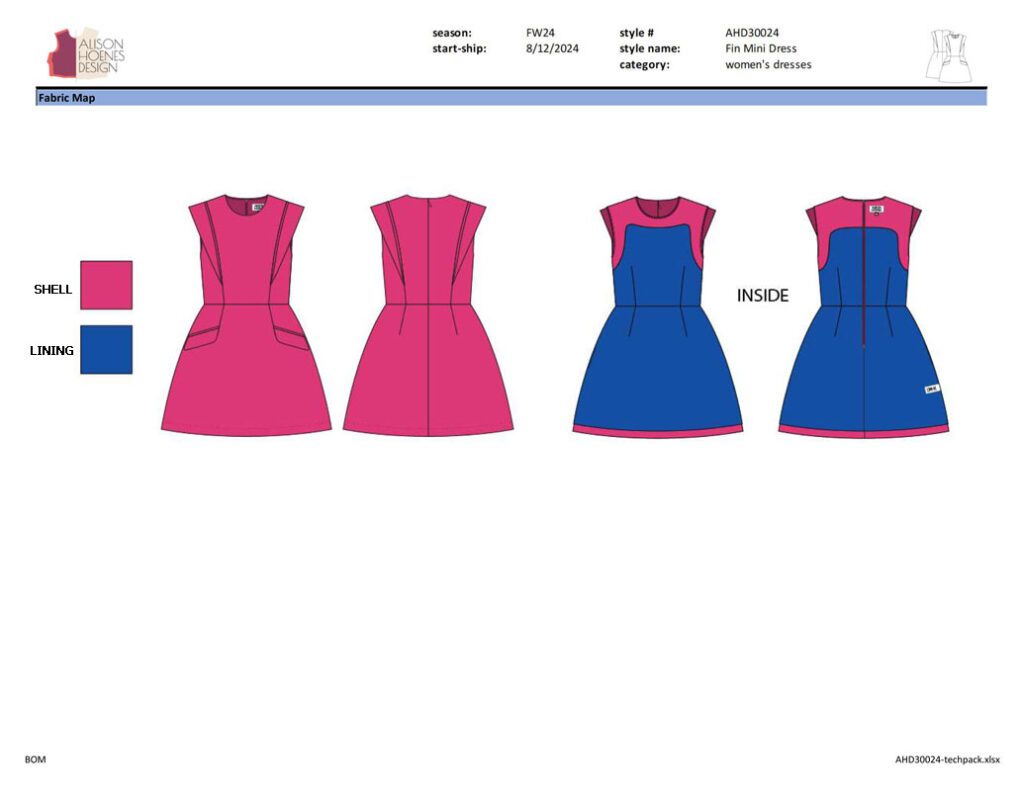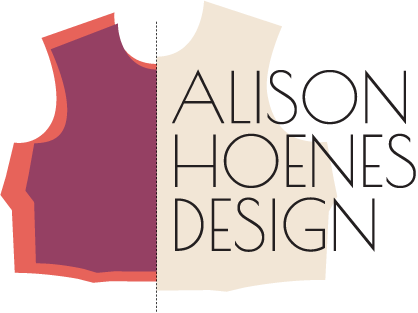The Bill of Materials page (called the BOM) is a chart that shows all the materials that go into your design. Think of it like the ingredients list on a recipe card. The BOM not only lists the fabrics, but shows all the trims, closures, thread, hangtags, labels, and packaging materials – everything you need to make the style start to finish.
Detailed information about the fabric construction, fiber content, weight, and description all have a spot on the BOM. If the width, vendor, and vendor sku are known, those should be included as well. There will also be a column for each colorway of the style that will show the color of each material needed. An essential part of the BOM is the yield or quantity needed for each material. For fabrics, this will be indicated in linear yards. For items such as buttons or labels, it will be by the piece.

A good tech pack should have plenty of visuals to go along with the written information. A CAD sketch called a fabric map goes along with the bill of materials spreadsheet to show where each fabric is used within the garment.
This is especially helpful for color-blocked styles or styles with lining or contrast pieces that are the same color. These may not show up distinctly on the colorway CAD found later in the tech pack. The fabric map does not show the actual colors, but simply shows a high-contrast visual of the placement of each fabric.
You can see how the pink is the shell fabric and the blue is the lining.

As the designer, the BOM can seem like a boring spreadsheet. It’s strongpoint, though, is that it is a comprehensive checklist when ordering for production. What do you need to order? How much of each do you need? What colors? It is all easily found on the BOM. It’s your shopping list and recipe card all in one.
The information on the BOM is also used in costing the style. For each input, multiply the cost per unit by the amount or yield required for each and total those up. That will be your material cost for the style. Once you combine that number with the cost to cut and sew along with your overhead cost and any shipping, you’ll get your total cost of goods. These are all crucial numbers in planning and pricing your line and making sure your business is profitable.
